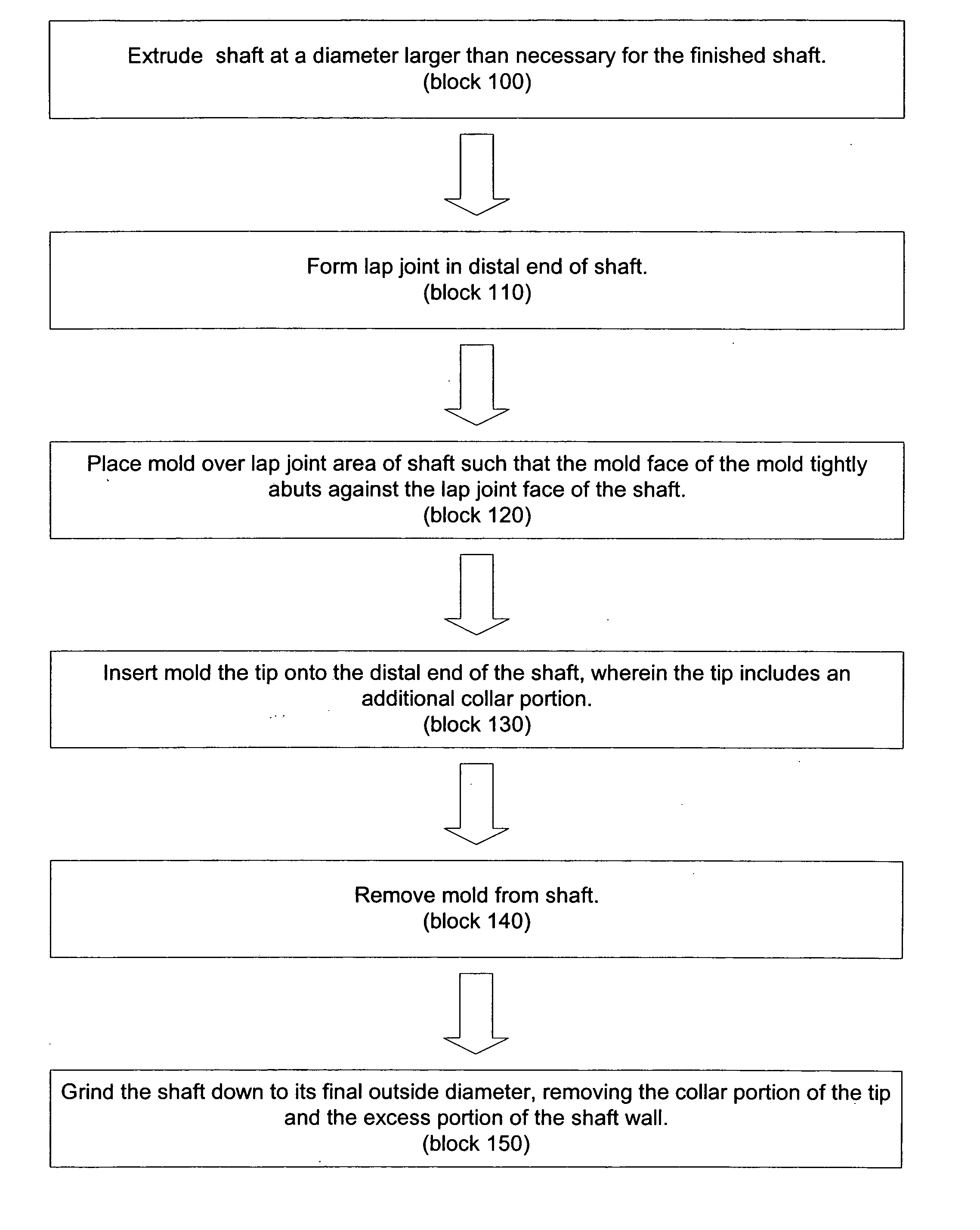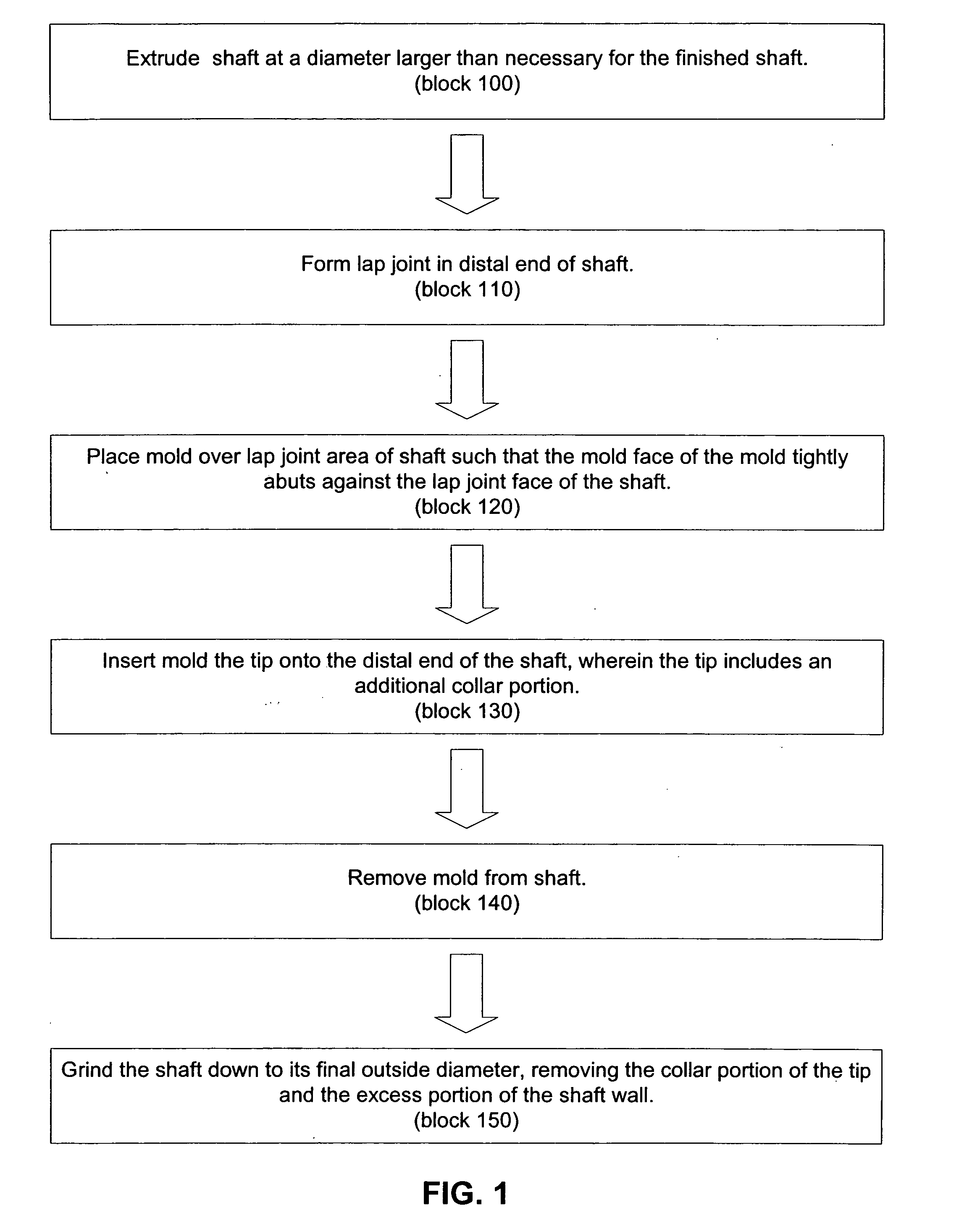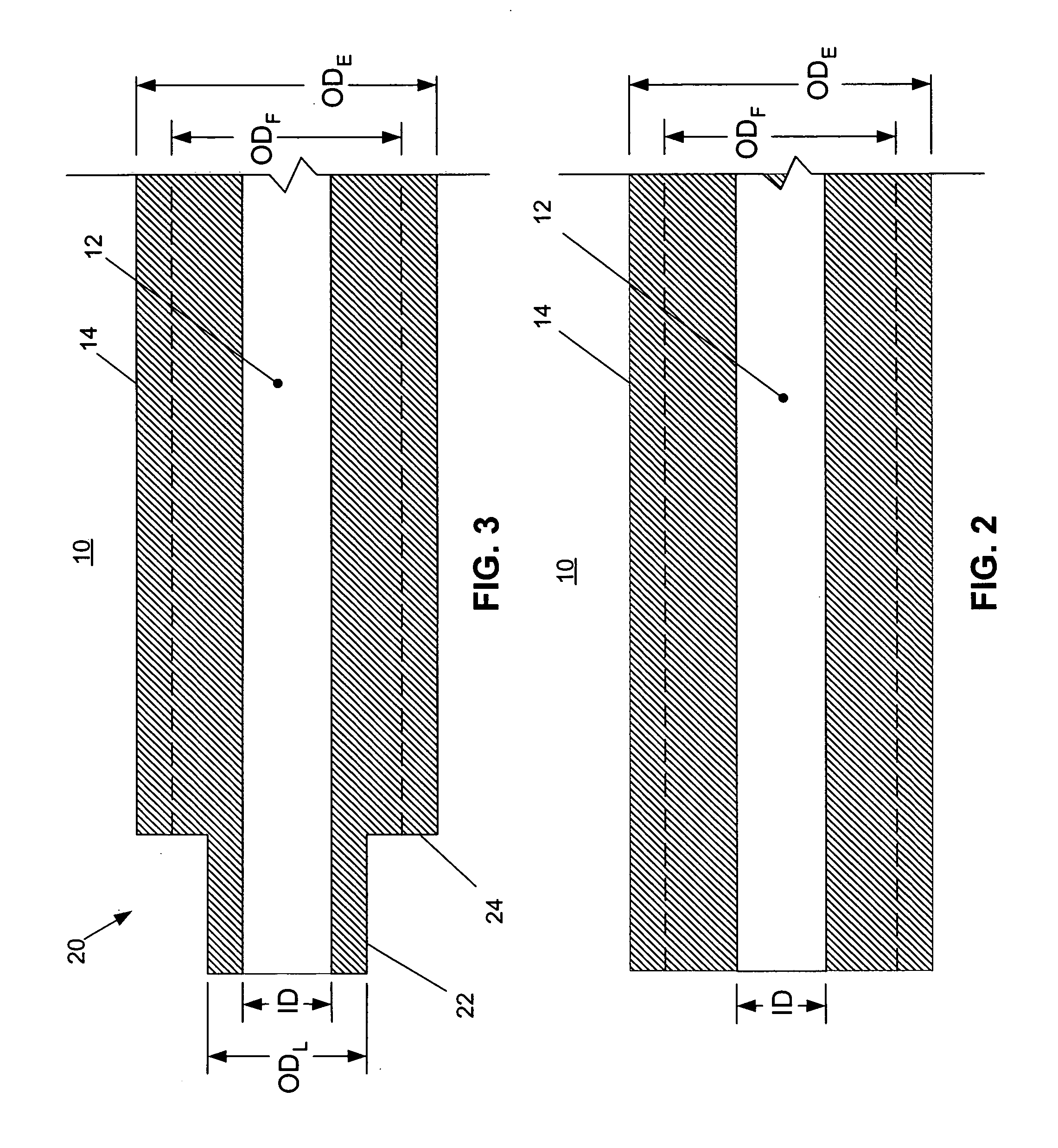Catheter tip and method of attaching a catheter tip to a catheter shaft
a catheter shaft and catheter tip technology, applied in the direction of catheters, etc., can solve the problems of insufficient bonding strength between the injection molded tip and the end of the shaft, unacceptably high scrap rate, and inability to provide the process. less than desirable
- Summary
- Abstract
- Description
- Claims
- Application Information
AI Technical Summary
Benefits of technology
Problems solved by technology
Method used
Image
Examples
Embodiment Construction
[0024] The present invention, in one embodiment, is a method of attaching or bonding a shaft tip to a catheter or sheath shaft. The method is advantageous because it is less labor intensive than prior art methods and results in less scrap. Throughout this specification, the term shaft is meant to include, without limitation, shafts for catheters, sheaths and similar medical equipment.
[0025] For a detailed discussion of one embodiment of the invention, reference is now made to FIGS. 1-5. FIG. 1 is a flow chart outlining the procedures comprising a method of attaching or bonding a shaft tip to a catheter or sheath shaft. FIGS. 2-5 are longitudinal sectional elevations of a distal end of a shaft 10 at the various stages of the manufacturing method, wherein the shaft 10 includes a central lumen 12 defined by a shaft sidewall 14.
[0026] As indicated in FIGS. 1 and 2, the shaft 10 is extruded such that the shaft's extruded outside diameter ODE is larger than the shaft's finished outside ...
PUM
| Property | Measurement | Unit |
|---|---|---|
| diameter | aaaaa | aaaaa |
| area | aaaaa | aaaaa |
| bond strength | aaaaa | aaaaa |
Abstract
Description
Claims
Application Information
 Login to View More
Login to View More - R&D
- Intellectual Property
- Life Sciences
- Materials
- Tech Scout
- Unparalleled Data Quality
- Higher Quality Content
- 60% Fewer Hallucinations
Browse by: Latest US Patents, China's latest patents, Technical Efficacy Thesaurus, Application Domain, Technology Topic, Popular Technical Reports.
© 2025 PatSnap. All rights reserved.Legal|Privacy policy|Modern Slavery Act Transparency Statement|Sitemap|About US| Contact US: help@patsnap.com



